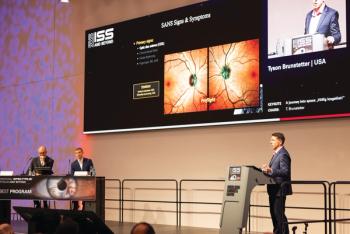
Are you switched on...to the latest developments in corneal surgery?
It was more than one hundred years ago when the world's first successful human corneal transplant was performed by Dr Eduard Zirm. Since then, corneal surgery has evolved dramatically through the refinement of techniques and instruments and the discovery and development of antibiotics and corticosteroids.
It was more than one hundred years ago when the world's first successful human corneal transplant was performed by Dr Eduard Zirm. Since then, corneal surgery has evolved dramatically through the refinement of techniques and instruments and the discovery and development of antibiotics and corticosteroids.
However, there are still limitations with transplants and corneal allograft rejection and failure is perhaps one of the biggest hurdles that needs to be overcome. Procedures such as epithelial sheet transplants, deep lamellar keratoplasty and endothelial lamellar keratoplasty are already in clinical practice and further technological refinements are sure to continue to improve predictability and success rates.
Another issue that researchers have been scratching their heads over, is the best way to treat keratoconus. In the early stages of the disease lenses are often used, however, for lens intolerant patients, corneal ring segments are proving to be a successful alternative. Taking a longer-term view, collagen cross-linking has been touted as the next big thing in keratoconus therapy. Although not a 'cure', it does appear to be successful in significantly slowing disease progression.
To kick off we have put together some 'snapshots' of recent corneal news and research to give you a taste of what is going on in this exciting subspecialty.
AMT + corticosteroid = epithelial healing
A study by Jean-Jacques Gicquel, MD and colleagues from the Poitiers University Hospital, Cedex, France, published in the January issue of Cornea, has found that early amniotic membrane transplantation (AMT) and topical corticosteroid treatment in patients with severe bacterial keratitis can provide immediate pain relief and allow epithelial healing.
Cross-linking helps avoid transplantation
Management of post-LASIK ectasia with UVA collagen cross-linking, followed by customized topography-guided photorefractive keratectomy (PRK) is an effective way to avoid corneal transplantation, according to Marianthi Chiridou and A.J. Kanellopoulos* of the LaserVision.gr Eye Institute, Athens, Greece. They found that the refractive and topographic stability, over a period of one year, validates this minimally invasive treatment and suggest that it may eventually have even wider applications.
Combination medications cause a meltdown
The combination of medications used on corneas that have had the epithelium removed (i.e. in LASIK or photorefractive keratectomy patients), can rapidly induce melting of the corneal stroma, underlining the importance of avoiding bilateral surface photoablations. Timo Tervo* and co-workers from the Helsinki University Eye Hospital, Finland, say that it is not yet known whether the combination of medications used react together or act in concert to produce the unexpected effect that, in turn, seems to induce collagenolysis.
1, 2, 3 steps to recognizing ulcers
A study published in the January 2007 issue of Cornea, has found that corneal ulcers that are classified as potentially sight threatening are at significantly higher risk for sustaining loss of best spectacle-corrected visual acuity compared with ulcers classified as rarely sight threatening. The study, led by Mark Vital, MD from the Houston Eye Associates, Texas, USA found that the "1, 2, 3" rule is sensitive and specific enough to be clinically useful in predicting which ulcers are more likely to result in vision loss.
Disk replacement safe after DSAEK
Posterior disk replacement is safe, straightforward and well tolerated in eyes with allograft rejection after Descemet's stripping automated endothelial keratoplasty (DSAEK), according to a report by Alaa El Danasoury* from the Magrabi Eye & Ear Hospital, Jeddah, Saudi Arabia. Dr El Danasoury used a 157 μm thickness posterior corneal disc to replace the rejected graft in a 62-year old male who had developed graft rejection, six months after DSAEK for pseudophakic corneal oedema. The cornea had cleared before the end of the first week, postoperatively and, at three months, UCVA was 20/60, manifest refraction was -1.50 to -1.00 axis 110 and BSCVA was 20/25. Meanwhile, central corneal thickness was significantly reduced.
Newsletter
Get the essential updates shaping the future of pharma manufacturing and compliance—subscribe today to Pharmaceutical Technology and never miss a breakthrough.












































